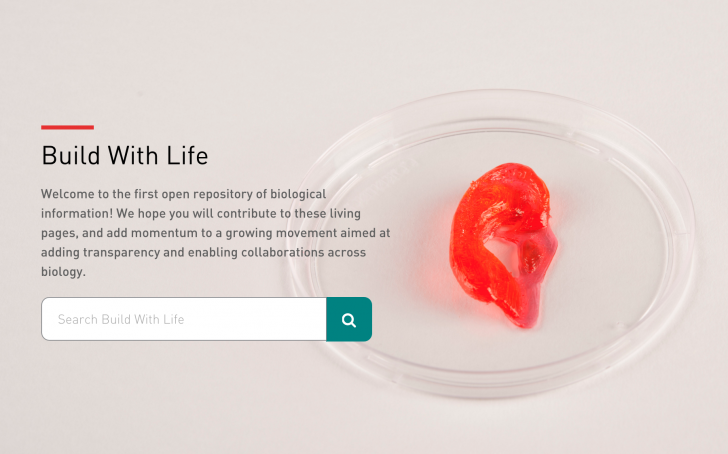Last week, I reported on a potential medical breakthrough coming from a Denver University research team, who had experimented with 3D bioprinting heart valves for future implant use. This team was utilizing a BioBot 1, the world’s first low-cost, commercially available desktop bioprinter on the market. When most people think of bioprinting, they generally don’t imagine it taking place on a desktop device, let alone one that is less than $10,000, but BioBots has completely changed the bioprinting game, and they’re now launching their new online resource platform “Build with Life”, which will help BioBot users communicate, share resources, and, thus, innovate desktop bioprinting even further.
Being on top of the desktop bioprinting market for two years now, BioBots is now trying to increase the sense of community for their users. The Build with Life portal aims to be the “wiki” for bioprinting, allowing BioBot 1 and other bioprinter users to all have access to the most up-to-date information and relevant experimentation. The portal hopes to make bioprinting more accessible to new users and students, while also giving more experienced users and researchers a platform to communicate and share their findings. You may be wondering why BioBots feels responsible or compelled to head this new community. Well, the truth is that, for two years now, they have remained the leading desktop bioprinting company by a comfortable margin.
“We have been able to penetrate the market so quickly that it really has not been an issue of competition,” said Danny Cabrera, founder and CEO of Biobots. “We have already been shipping the machines for almost two years and people still keep launching new projects so it seems that demand is pretty high. We are shipping a lot of machines to a lot of different types of customers, from big pharma companies to device companies, research organization and universities.”
The best way to innovate and improve bioprinting technology is to cultivate a sense of community around it. For example, most individuals with exceptional knowledge on naturally-derived bioinks are typically bioengineers, who can now, through the Build with Life portal, help teach more novice users or students about collagen, alginate, hydrogel, gelatin, and other possible biomaterials. Bioprinting is much more complicated than simply downloading a .stl file and 3D printing it with an FFF printer, which gives BioBots all the more reason to launch the Build with Life portal.
“It is just about open access,” said Cabrera, “a way for people to come together and start speaking the same language.” Whether you’re experienced with bioprinting, or just plain interested in it, you can view or add your experience to the Build with Life platform here.





